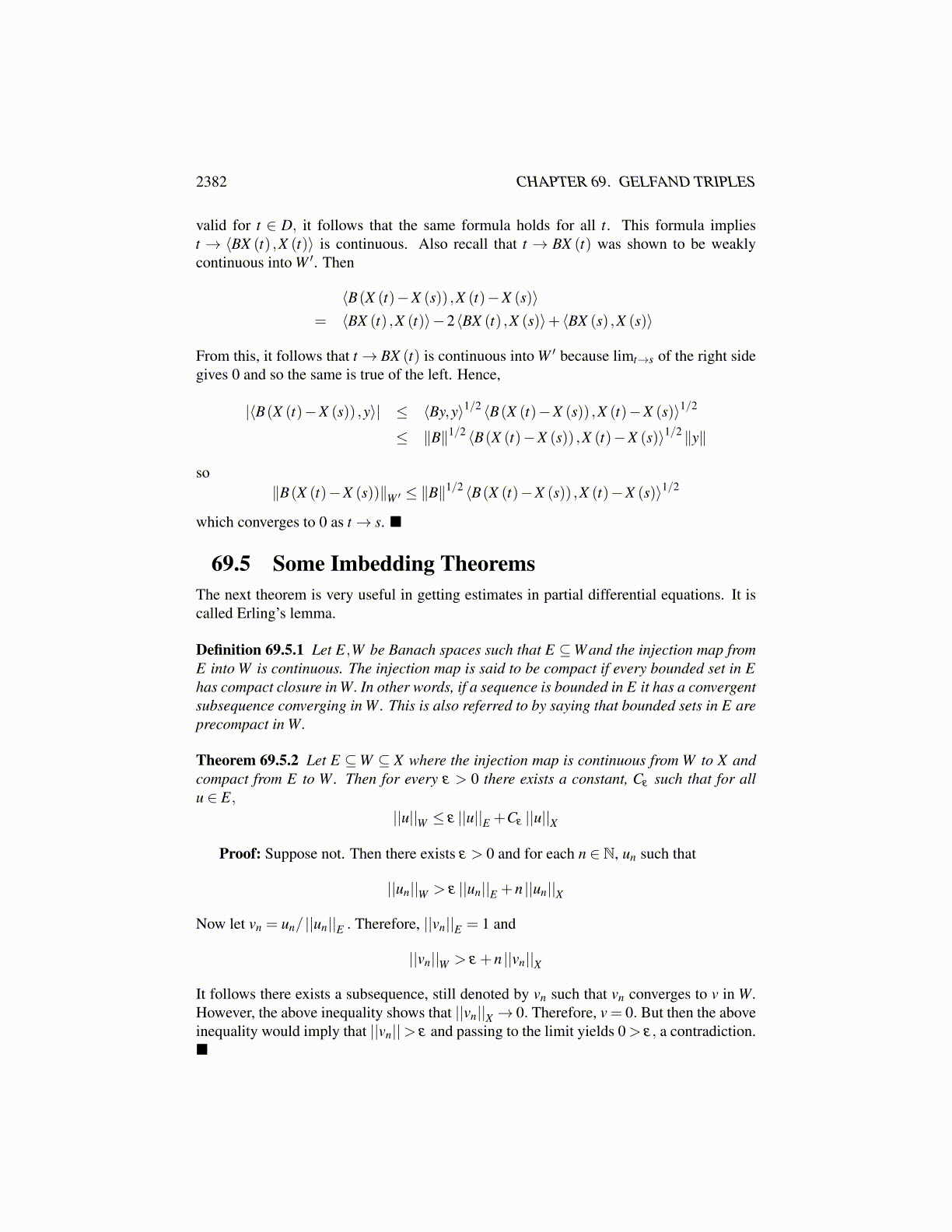
2382 CHAPTER 69. GELFAND TRIPLES
Therefore, this term is dominated by an expression of the form
mk−1
∑j=0
(∫ t j+1
t j
Y (u)du,X(t j+1
)−X (t j)
)
=mk−1
∑j=0
⟨∫ t j+1
t j
Y (u)du,X(t j+1
)−X (t j)
⟩
=mk−1
∑j=0
∫ t j+1
t j
⟨Y (u) ,X
(t j+1
)−X (t j)
⟩du
=mk−1
∑j=0
∫ t j+1
t j
⟨Y (u) ,X
(t j+1
)⟩−
mk−1
∑j=0
∫ t j+1
t j
⟨Y (u) ,X (t j)
⟩=
∫ T
0⟨Y (u) ,X r (u)⟩du−
∫ T
0
⟨Y (u) ,X l (u)
⟩du
However, both X r and X l converge to X in K = Lp (0,T,V ). Therefore, this term mustconverge to 0. Passing to a limit, it follows that for all t ∈ D, the desired formula holds.Thus, for such t ∈ D,
⟨BX (t) ,X (t)⟩= ⟨BX0,X0⟩+2∫ t
0⟨Y (u) ,X (u)⟩du
It remains to verify that this holds for all t. Let t /∈ D and let t (k) ∈Pk be the largestpoint of Pk which is less than t. Suppose t (m)≤ t (k) so that m≤ k. Then
BX (t (m)) = BX0 +∫ t(m)
0Y (s)ds,
a similar formula for X (t (k)) . Thus for t > t (m) ,
BX (t)−BX (t (m)) =∫ t
t(m)Y (s)ds
which is the same sort of thing already looked at except that it starts at t (m) rather than at0 and X0 = 0. Therefore,
⟨B(X (t (k))−X (t (m))) ,X (t (k))−X (t (m))⟩
= 2∫ t(k)
t(m)⟨Y (s) ,X (s)−X (t (m))⟩ds
Thus, for m≤ k
limm,k→∞
⟨B(X (t (k))−X (t (m))) ,X (t (k))−X (t (m))⟩= 0 (69.4.26)